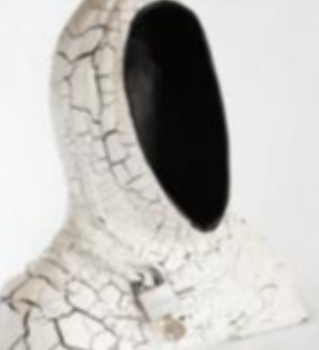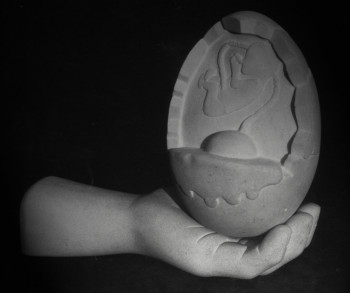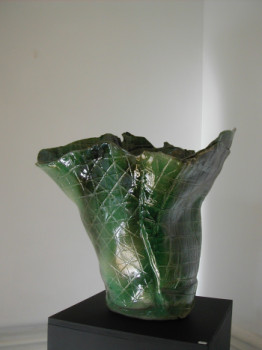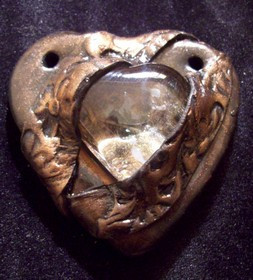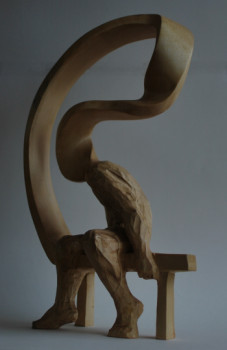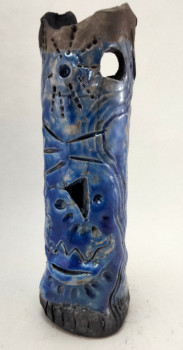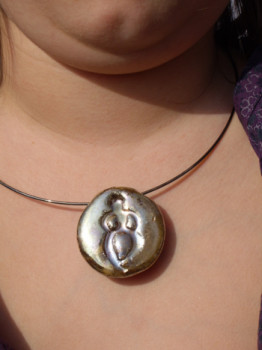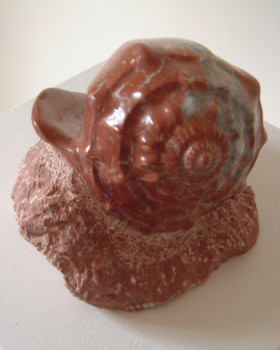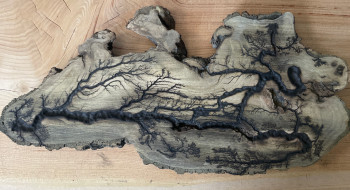
David Smith: the pioneer of the use of welded metal
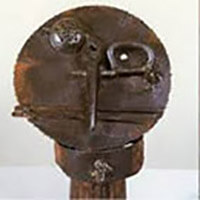
David Smith is one of the best American sculptors of the 20th century. He created a complex mythology around this difficult task and often spoke of the formative experiences he had as a young man working in an auto body shop.
The discovery of your passion
In 1921, David Smith's family left Decatur, Indiana, where they lived. he was born in 1906, to settle in Paulding, Ohio. David Smith's father ran a telephone company and dabbled in invention, while David Smith's mother worked as a teacher . The artist sculptor was the great-grandson of a blacksmith. Smith drops out of college after only one semester and begins to study. He worked at the Studebaker vehicle plant in South Bend, Indiana, in 1925. He will learn the spot welding and soldering skills he will need for the rest of his creative career.
The beginnings of an autodidact
Smith first spends some time at home. Washington, D.C., before settling in New York in 1926. After registering at the Art Students League, where he spent the next five years at work. study painting and drawing, he quickly met his first wife, the sculptor Dorothy Dehner. He never received formal instruction in sculpture. However, his teacher at the Art Students League, Jan Matulka, encouraged him to do so. start at include three-dimensional aspects in his paintings. It's up to you It was this time that the sculptor began to work. create works resembling reliefs, which then evolved into towards more sculptural pieces resembling a sculpture. Objects. The artiste becomes friends with with the writer and artist John Graham through the Art Students League, and it was through Graham that he entered in contact with the great New York artists Stuart Davis, Willem de Kooning and Arshile Gorky.
Through reprints in the French magazine Cachiers d'Art, Graham also exhibited Smith at the sculptures in welded metal; by Pablo Picasso and Julio Gonzalez to; the end of the 1920s. It was at the end of the 1920s. at that moment that Smith had a revelation: he understood that he could use the industrial methods he had learned as a skilled worker to create works of art. In 1932, Smith purchased welding equipment, and in 1933 he began manufacturing welding equipment. rent space in the Terminal Iron Works welding shop Brooklyn. Over the following years, he experimented with metalwork, producing handmade sculptures. small-scale, more abstract works that use found materials and the formal languages of cubism and surrealism, as well as relief plaques such as the Medals for Dishonor (1937-40), in relief. strong political connotation. In 1938, he presented his first personal exhibition in Paris. Marian Willard's East River Gallery, which includes welded metal drawings and sculptures.
Closer and closer to sculpture
In 1940, Smith and Dehner settled permanently in their property. from Bolton Landing in upstate New York. In honor of his Brooklyn studio, he is giving away the the farm is called "Terminal Iron Works". After this change, there was a two-year period of lower production, during which Smith avoided production. military service working in a locomotive factory. The young talent produced many works in the 1940s, working under the influence of surrealism to develop an aesthetic of sculpture which frames abstract and metamorphic forms in a deliberately flattened cubist space. In these works, the sculptor places emphasis on the gaze, in particular on the gaze at a glance. from a single, fixed point of view. Unlike the painter who strives to give the appearance of three-dimensionality; In the two-dimensional medium of painting, he developed what could be considered like a flattening of sculptural forms. Smith was interested in the junction between painting and sculpture as well as; the science of perception.
The artist won the award. two Guggenheim Prizes in 1950 and 1951 after having started teach at Sarah Lawrence College the end of the 1940s. Thanks to With this influx of money, the artist was able to increase the scope and ambition of his work and devote all his time to creating his work. artistic creation. The creative and material possibilities of its process welding of steel made it possible to Smith to produce huge, moving sculptures that look like sculptures. sketches in space, such as Hudson River Landscape (1951). These pieces imitate the spontaneous technique, inspired by automatism, favored by many painters of the New York School, thanks to their fluid lines and their open construction, which reveal not only Smith's formal training as a draftsman and painter, but also his formal training as a draftsman and painter.
Its twilight
The artist sculptor began the Cubi series (1961-65), which is undoubtedly his best-known body of work, in 1961. These sculptures are made up of geometric shapes Made of stainless steel, generally rectilinear, assembled in a haphazard way to resemble the human body. These works, like many of his previous works, explore the concept of three-dimensional forms seeming to exist in a flat, painterly realm outside the box. start from a single point of view. Unlike Smith's painted sculptures from the contemporary Zig series (1961-64), most of these pieces have extremely burnished surfaces that produce almost calligraphic patterns, evoking the look of brushwork on an abstract expressionist painting. In fact, David also produced a number of paintings inspired by his Cubist sculptures. For these paintings, the sculptures were arranged on a white background, and spray paint was used to create negative images that further connected the sculptures of Smith at; his training in painting and drawing.
En 1962, Smith reçoit la commande d'une toute nouvelle pièce pour un événement culturel Spoleto, en Italie. Il a eu le droit d'utiliser librement une fonderie d'acier abandonnée dans la ville de Voltri pour produire cette pièce. Une période de création frénétique est stimulée par l'environnement, qui ressemble étrangement son ancien studio de Terminal Iron Works, ainsi que par la grande disponibilité des fournitures et des aides. Au cours de son séjour d'un mois, Smith a créé 27 sculptures, collectivement appelées la série Voltri. Il a commandé une quantité importante d'acier de l'installation pour la ramener aux États-Unis, tant il a été impressionné par l'endroit. Là, il continue créer de nouvelles sculptures en utilisant les matériaux de Voltri, qu'il appelle la série Voltri-Bolton ou Voltron (1962-63).
Smith est malheureusement décédé en 1965, l'apogée de sa croissance créative et professionnelle, des suites de blessures reçues dans un accident de voiture Bennington, dans le Vermont.
Découvrez quelques oeuvres inspirées de Smith
